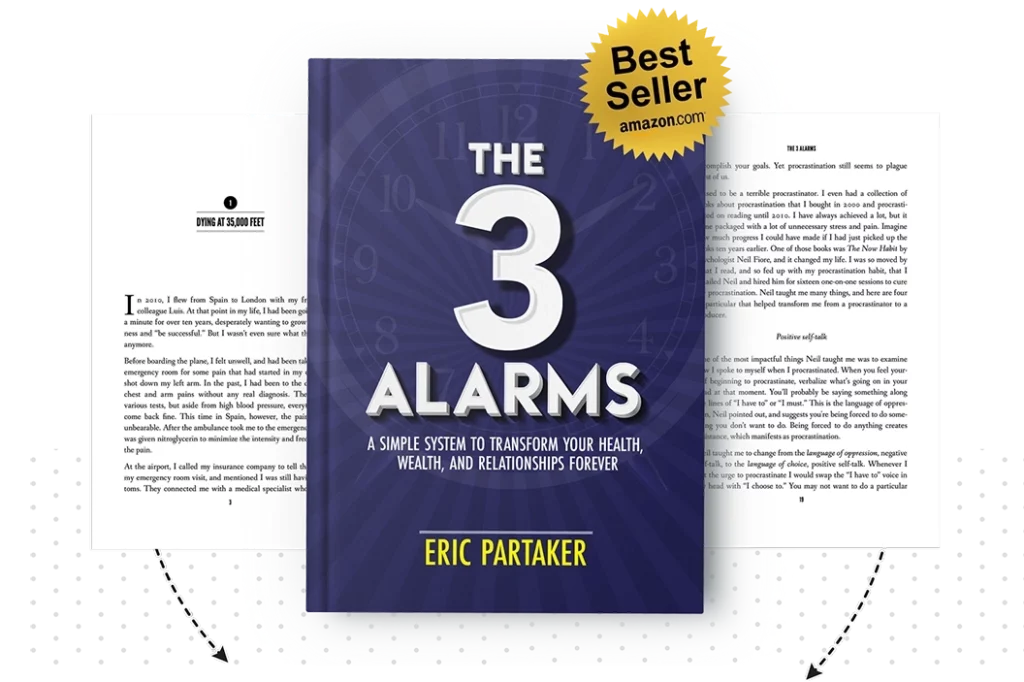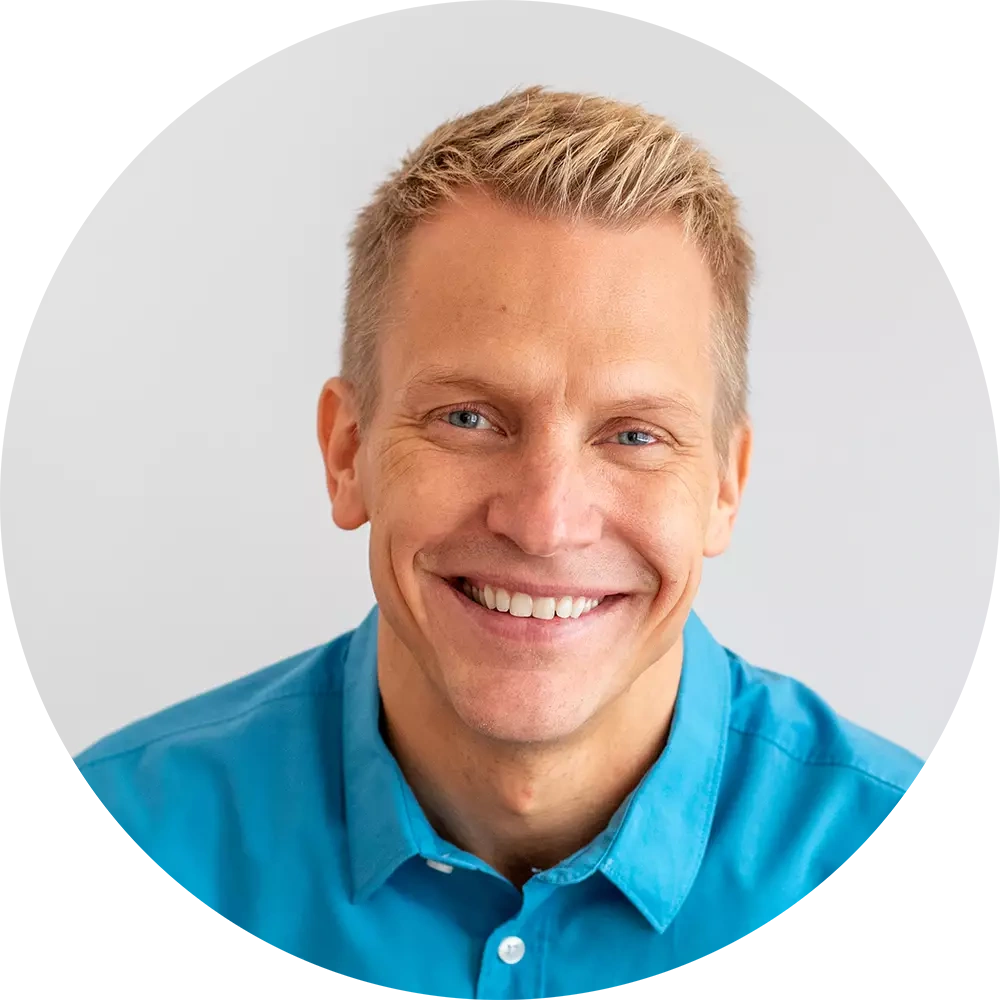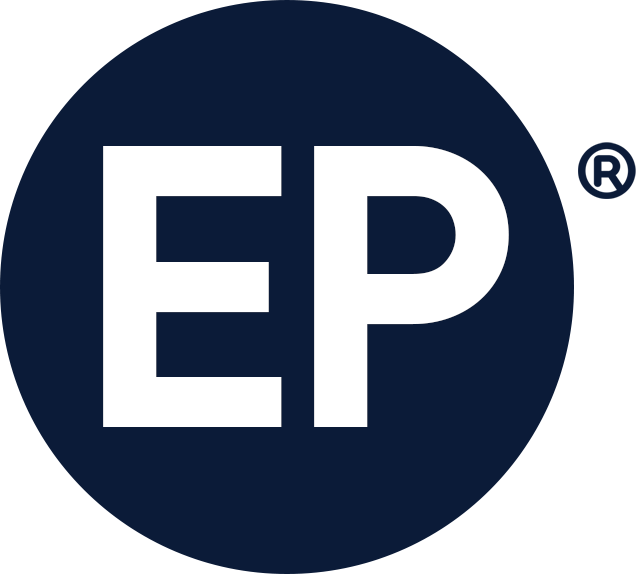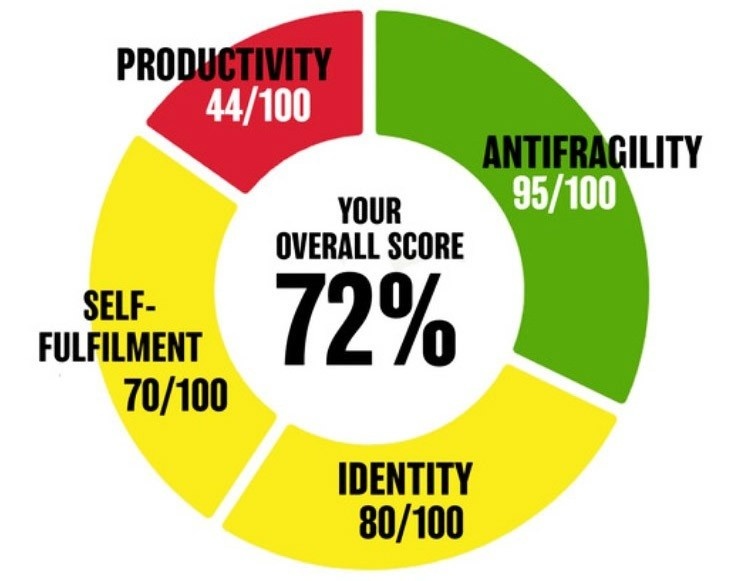SUMMARY
- Some of the questions I get the most with my coaching clients are around purpose, like “What should I be doing with my life? Where should I be going? Am I doing the right things?”
- When I look back at my own life, if somebody were to have told me 20 years ago, that I would have gone from McKinsey to Skype, from CEO of Chilango to becoming a high performance coach, I would have laughed. But through that journey, I’ve developed a unique approach to help people find purpose
- One tool to help you find your purpose is to write down all the things you’d possibly like to do and then rank them from 1-10 across these 5 dimensions:
1) How much would you love doing this? 2) How skilled are you at this?
3) How much does the world need this? 4) How much would this challenge you?
5) Will this help you fulfil your life goals? - To live the life that only you can live you need to break out of the fixed mindset and adopt a growth mindset. A fixed mindset is the belief that our abilities are limited, while a growth mindset is the belief that we can change through hard work. As Henry Ford said, “Whether you think you can or you can’t, you’re probably right.”
- All the knowledge and experience you need to fulfil any life ambition you have already exists. All you have to do is find it and join the dots. This could involve connecting to a person, discovering a book or going through an experience yourself. When things get tough, just remind yourself – whatever you’re seeking is out there. You just have to keep looking.
TRANSCRIPT
Have you ever wondered “What the heck should I be doing with my life?” Maybe you’re in a current role and you’re not sure what to do next. Maybe you’re in transition and you have a myriad of options in front of you, and you’re not sure which one to choose. Well, I get this question quite a lot with my coaching clients, from a purpose point of view: “What should I be doing with my life? Where should I be going? Am I doing the right things?” And when I look back at my own life, if somebody were to have told me 20 years ago, that I would have gone from McKinsey & Company to helping build Skype, to getting into the burrito business, to becoming a high performance coach, I would have laughed. I would have thought that’s absolutely crazy.
But actually through that journey, which I’d like to tell you about today, are merged a quite powerful framework that I use to help people decide what they should be doing with their life – decide what they should be doing next, or make a decision about whether they should stay in what they’re currently doing, or perhaps think of something new. I want to share that with you today. I’ll start off by just telling you a bit of a story about how I got to where I got to today and the key decisions that I thought of at each point in that journey. So we go back about 20 years and I’m graduating university and thinking about my first job and what to be doing next. And McKinsey & Company came on the radar for me and I didn’t really know anything about the company.
I wasn’t sure if I wanted to go into consulting. But what I really liked about McKinsey was that I thought that the experience was going to be very, very challenging for me and teach me quite a lot. I also thought that the experience would be good for my resume, that it would be a brand that people recognize and sure enough, that as a journey for me really ticked those boxes. It really challenged me and ended up being very good for my resume. Really opened up a lot of doors for me afterwards. And it definitely felt like the right decision at the time. After McKinsey, I was looking for my next thing to do. And I came across Skype. I had been using Skype very, very early on. This is going back to about 2004 and I looked at Skype and I thought, wow, this looks like something that’s going to be really fun.
And it’s something fun to be a part of something, you know, fun to participate. The funny thing is, I didn’t know anything about technology, but I knew that something that my parents told me really stuck with me as a child, and I took that into adulthood, which is that you can learn anything in life at any point, if you just put your mind to it, if you just put in the hard work. I put in a little bit more effort and work to learn about tech and learn about what Skype was doing. And I applied for a role there and sure enough was accepted to join the team there and participate in what ended up being a real rocket ship of a journey.
We had an exit to eBay for about $4 billion back in 2005. I really learned a lot from that process and thereafter, I thought, “Well, what should I do next? What should I do next with my life?” Just to keep things fun, to keep things interesting. I thought back, “Well, when did I have the most fun in life?” And I thought back to when I worked in restaurants and bars, and then I was missing Mexican food, and I decided to start a chain of Mexican restaurants, which is again, completely random. I started a chain of Mexican restaurants in the UK and London and built that throughout the country, it was called Chilango.
That experience taught me a few things as well. I didn’t know anything about how to start a restaurant chain, but I realized that if I could just connect the dots between all the knowledge that existed out there, the recipes that the people who had built restaurant chains before, and bring that together, that I’d be able to create what what ended up becoming an award winning Mexican food brand.
After the whole Chillingo experience, I decided to go into high performance coaching because I was really keen to not only reach my full potential in life, but also to teach others to do the same. I thought that that would be consistent with my life goals too. At the time I wanted to go into a life or a job that would give me the opportunity to work remotely with lots of different people – earn a high income. Who doesn’t want a higher income, right? We all have things that we want to buy in life and things that we want to achieve. And sometimes you need money to do that. There’s no harm in that. And through all of this emerged a really useful way for determining what should your purpose be in life? Or what should you do next? Or should you stay in that job? Or should you pursue that next thing?
So there’s three things I want to teach you. One is, I call it the “5×10” framework. I want to talk about having a fixed versus a growth mindset. And then I want to talk about the concept of “Connecting the Dots” and how that applies to you in whatever you’re doing next in your life, for you to succeed in your purpose, or to fulfill your purpose.
So the first is that “5×10” framework. What I encourage you to do is list out all the different things that you could be doing on a simple sheet of paper. In your left hand column lists all the different things that you could be doing. And then for your first column and the series of columns, what I want you to do is evaluate each of these things on a 1-10 level – 10 points is you really, really believe in it; 1 point is, you don’t believe in it at all. There’s five columns here that you’re going to evaluate your ideas against up to 10 points each. That’s where that “5×10” framework, that name comes into play here. So the first column is “To what degree would you really love doing whatever it is that you have in mind?” 10 is you could absolutely love doing this. You’d absolutely pour your heart into it. It’s everything that you’d want to do. You’d have a lot of fun doing it. 1 is you’d absolutely detest it. So 1-10, “How much would you love doing whatever this idea is that you have in mind?”, number two, “To what degree would you be good at doing this?”
How skilled are you at whatever this endeavor is? Because we like to do things that we’re good at, right? It makes us feel good. So 10 is, you’d be super skilled at, 1 if you’d be awful at it. The third column is “To what degree would the world really need this? To what degree would it create impact?” When I was working at Skype, our tagline was “The whole world can talk for free”, which created this revolutionary spirit inside the company. We knew that we were doing the world good. So “To what degree would the world really need it?” What you’re doing 10 is they really, really, really need it. Had a high impact on the world. 1 is not so much. The next column is “To what degree would it require you to show up as your best self or to think of this?”
Another way is “To what degree would just pursuing this idea really challenge you?” On the one hand, we talked about, we’d like to do things that we’re good at, but we also want to be challenged here. You know, 10 is you would find it super challenging. It would really require you to show up at your absolute best. And a 1 is it would just be a complete walk in the park. And then the fifth and final column of this “5×10” framework is “To what degree would doing whatever this next thing is for you in life, fulfill your life goals?” Maybe there’s a house you want to buy, or you want to be traveling more, have a little bit more freedom from your job, a little bit more time with your family. And so a 10 is it’s completely consistent with your life goals. It would really help you achieve them. 1 is, it takes you away from them completely. So that’s that “5×10” framework – five columns to evaluate your ideas against, giving up to 10 points each and see what comes out on the other side. You know, maybe some ideas are very, very close to 50. Maybe some are in the twenties or thirties. There are some that are totally lacking and it’s not a foolproof system, but it will help you bring a little bit more data to your analysis of your idea. So you’re not just going on pure gut feel.
The second thing that we have to remember when we’re talking about purpose is the fixed mindset versus growth mindset. Because a lot of times we really limit what we could be doing next in life. What are our purposes in life by thinking about things in a really fixed way? So a fixed mindset, for example, is a mindset whereby you believe “I pretty much can only do the things that I’ve already done in life. My intelligence is quite fixed. It’s hard to learn new things after a certain age” and all of this, by the way, has been proven to not be true. If you take a read of the book Mindset by Carol Dweck, she talks about how there’s fixed mindset and growth mindset people, and that at any point in life, we can change our mindsets with the right type of thinking. A growth mindset is going to serve you far better when thinking about what you might do next with your life, or am I doing the right thing, from a purpose point of view, because with a growth mindset, you believe that anything you put your mind to with enough hard work you can achieve, you can learn – your intelligence isn’t set at a certain age. It isn’t limited to what you’ve done in the past.
Take my journey, for example. I went from management consulting at McKinsey & Company to helping build a tech company with Skype then to going into the restaurant industry and building a chain of burrito restaurants, and then going into what I do today, which is high performance coaching. So completely random. But I respected the fact that if I just put in the work and trust that I can learn, that I can do new things – having that growth mindset really will expand your opportunity set of all the things that you could be doing with your life.
And then the third and final point is this concept I just call “Connecting the Dots”. I really believe all the knowledge, all the expertise, all the resources that you might need to fulfill any direction that you want to take your purpose in, to fill any life ambition that you have, that it already exists out there. And your job is to simply connect your way to it.
It could be connecting your way to a person to some knowledge in the form of books or courses. The expertise, the knowledge, the wisdom – it is out there. You just need to connect the dots and find your way to all of those things and bring it together – bring it into your world so that you can achieve whatever you put your mind to. If you take your ideas and place them on that “5×10” framework; if you make sure that you keep a growth mindset and not just a fixed mindset in terms of what you achieve; and then remember that all you have to do is connect the dots to get to the people, resources, or experience you need to follow your dreams; you really will not only be able to evaluate your purpose where you are and future ideas, but really open up the world to a tremendous array of possibilities for your life.




